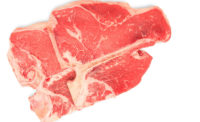Process control is used extensively by the large meat companies to optimize processing, by maintaining process variables within a desired range. Based upon the results of process monitoring, processes may be changed to bring out-of-control processes back into control or when making changes, such as increasing or decreasing ingredient concentrations or introduction of new equipment. Process control can be applied to quality or food safety variables associated with meat products. Process control involves tracking and trending of data, statistical process control (SPC), validation and control documentation and process development. There are many training opportunities for these topics outside meat science, but there is currently not such a course designed for the meat industry.
Through tracking and trending, processors gather data during normal processing to establish a process history, and using SPC, calculate control limits for each variable, to which they compare to future processing data. The underlying concept of SPC is based upon a comparison of what is happening today during processing, to what has happened historically. SPC uses means to calculate variations to monitor and improve any process for which there are measureable parameters. Trending of these results is used to detect when something has changed or when a change is starting. Based upon these results, processes can be adjusted to more closely meet specifications or be in compliance with established limits. These process adjustments have traditionally been done manually, but automation has become an increasingly popular method for making such adjustments.
From a food safety perspective, meat processors generate a lot of data when monitoring their critical control points (CCPs) and prerequisite programs (PRPs), and these data could be put to better use, particularly by smaller meat processors. For example, by using tracking and trending, this data could be graphed over time to demonstrate deviations and/or conformance to established limits. Such results could be used to support hazard analysis and corrective action decisions that HACCP teams make. Also, USDA-FSIS requires all HACCP programs to be reassessed annually, and in order to fulfill this obligation, management must look at all data generated during monitoring and verification processes, and adjust their HACCP programs based on these results. Again, trend analysis would allow processors to demonstrate conformance or lack of conformance over time to established critical limits.
In addition to monitoring product parameters to access process consistency, validation of equipment is also very important to producing meat products of consistent quality and safety. Process validation applies to both raw and cooked products. For cooked products, validation is important during cooking and chilling. The variables affecting the cooking of meat products are dry-bulb and wet-bulb temperatures, oven air velocity and cooking time. Sources of temperature variation can be oven design, product loading, product shape and the cooking process. Balancing an oven is dependent upon airflow and air handling. Equipment validation essentials include: validation frequency, location and number of temperature probes, expected variation and temperature measurement equipment.
Process control is very important for optimizing process consistency, both in terms of quality and food safety. NP




Report Abusive Comment